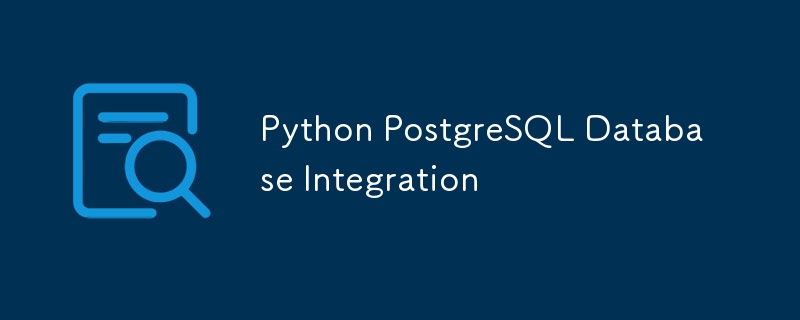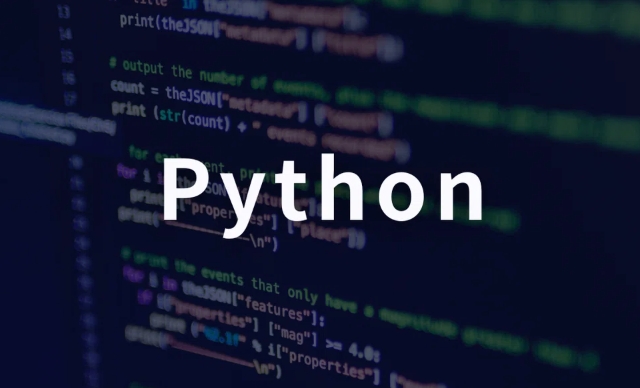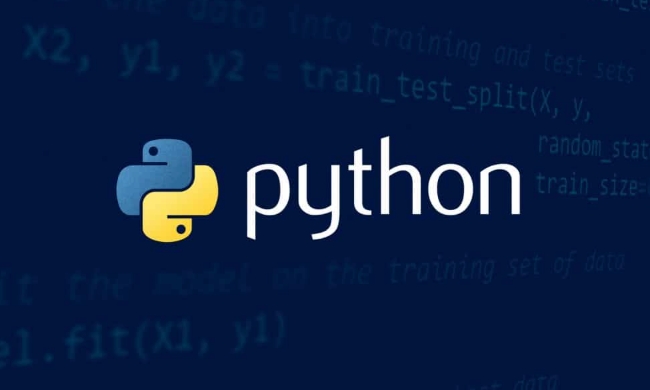Python connection to PostgreSQL The most commonly used psycopg2 library is the pip install psycopg2 library. It is necessary to install it through pip install psycopg2; 1. Use the psycopg2.connect() method to pass in the host, database name, user name, password and port information to establish a connection; 2. Create a cursor object to execute SQL queries and get the results; 3. Be sure to close the cursor and connection after the operation is completed; Common problems include connection failures, SQL statement errors, uncommitted transactions, and resource leakage, etc. It is recommended to use try-except for exception handling and submit transactions with conn.commit(); if performance is required, you can use SQLAlchemy to multiplex database connections with connection pool.

The combination of Python and PostgreSQL is a common combination in many back-end projects, data applications, and web services. If you need to connect and operate PostgreSQL databases in Python programs, the most common way is to use the psycopg2 library.

Install psycopg2
To connect to PostgreSQL using Python, you first need to install psycopg2 . It can be installed via pip:
pip install psycopg2
If you just need basic connectivity, this is enough. If you want to support more advanced features (such as connection pooling), you can also install psycopg2-binary or SQLAlchemy for use.

Basic ways to connect to databases
The most basic way to connect to PostgreSQL is to use psycopg2.connect() method and pass in the basic information of the database, such as the host, port, database name, user name and password:
import psycopg2
conn = psycopg2.connect(
host="localhost",
database="your_db",
user="your_user",
password="your_pass",
port="5432"
)After the connection is successful, you can create a cursor object to execute SQL queries:

cur = conn.cursor()
cur.execute("SELECT * FROM your_table")
rows = cur.fetchall()
for row in rows:
print(row)Remember to close the cursor and connection after the operation is completed:
cur.close() conn.close()
Frequently Asked Questions and Notes
- Can't connect to the database : Check whether the database is running, whether the port is correct, and whether the connection parameters are accurate.
- The query result is empty : Make sure that the SQL statement is correct and whether the table name and field name are spelled correctly.
- Forgot to commit transactions : After performing insert, update or delete operations, remember to call
conn.commit(). - Cursor not closed : Not closing cursor for a long time may lead to resource leakage.
- Exception handling : It is recommended to use try-except to wrap the database operation to prevent the program from crashing.
For example:
try:
conn = psycopg2.connect(...)
cur = conn.cursor()
cur.execute("INSERT INTO table VALUES (%s, %s)", (value1, value2))
conn.commit()
except Exception as e:
print("Database operation error:", e)
Finally:
If cur:
cur.close()
if conn:
conn.close()Use connection pools to improve performance (optional)
If your program frequently connects to the database, you can consider using a connection pool to reuse the connection to improve performance. psycopg2 itself does not have a connection pooling function, but it can be used with tools such as SQLAlchemy or pg8000 .
A simple example (using SQLAlchemy):
from sqlalchemy import create_engine from sqlalchemy.orm import sessionmaker engine = create_engine('postgresql://user:password@localhost:5432/dbname', pool_pre_ping=True) Session = sessionmaker(bind=engine) session = Session()
This allows multiplexing of connections to reduce the overhead of repeated connection establishment.
Basically that's it. Although the integration of Python and PostgreSQL is not complicated, some details are easily overlooked, such as transaction processing, connection release, exception capture, etc. Paying more attention to these points when writing code can avoid many problems.
The above is the detailed content of Python PostgreSQL Database Integration. For more information, please follow other related articles on the PHP Chinese website!

Hot AI Tools

Undress AI Tool
Undress images for free

Undresser.AI Undress
AI-powered app for creating realistic nude photos

AI Clothes Remover
Online AI tool for removing clothes from photos.

Clothoff.io
AI clothes remover

Video Face Swap
Swap faces in any video effortlessly with our completely free AI face swap tool!

Hot Article

Hot Tools

Notepad++7.3.1
Easy-to-use and free code editor

SublimeText3 Chinese version
Chinese version, very easy to use

Zend Studio 13.0.1
Powerful PHP integrated development environment

Dreamweaver CS6
Visual web development tools

SublimeText3 Mac version
God-level code editing software (SublimeText3)
 Polymorphism in python classes
Jul 05, 2025 am 02:58 AM
Polymorphism in python classes
Jul 05, 2025 am 02:58 AM
Polymorphism is a core concept in Python object-oriented programming, referring to "one interface, multiple implementations", allowing for unified processing of different types of objects. 1. Polymorphism is implemented through method rewriting. Subclasses can redefine parent class methods. For example, the spoke() method of Animal class has different implementations in Dog and Cat subclasses. 2. The practical uses of polymorphism include simplifying the code structure and enhancing scalability, such as calling the draw() method uniformly in the graphical drawing program, or handling the common behavior of different characters in game development. 3. Python implementation polymorphism needs to satisfy: the parent class defines a method, and the child class overrides the method, but does not require inheritance of the same parent class. As long as the object implements the same method, this is called the "duck type". 4. Things to note include the maintenance
 Python Function Arguments and Parameters
Jul 04, 2025 am 03:26 AM
Python Function Arguments and Parameters
Jul 04, 2025 am 03:26 AM
Parameters are placeholders when defining a function, while arguments are specific values ??passed in when calling. 1. Position parameters need to be passed in order, and incorrect order will lead to errors in the result; 2. Keyword parameters are specified by parameter names, which can change the order and improve readability; 3. Default parameter values ??are assigned when defined to avoid duplicate code, but variable objects should be avoided as default values; 4. args and *kwargs can handle uncertain number of parameters and are suitable for general interfaces or decorators, but should be used with caution to maintain readability.
 Explain Python generators and iterators.
Jul 05, 2025 am 02:55 AM
Explain Python generators and iterators.
Jul 05, 2025 am 02:55 AM
Iterators are objects that implement __iter__() and __next__() methods. The generator is a simplified version of iterators, which automatically implement these methods through the yield keyword. 1. The iterator returns an element every time he calls next() and throws a StopIteration exception when there are no more elements. 2. The generator uses function definition to generate data on demand, saving memory and supporting infinite sequences. 3. Use iterators when processing existing sets, use a generator when dynamically generating big data or lazy evaluation, such as loading line by line when reading large files. Note: Iterable objects such as lists are not iterators. They need to be recreated after the iterator reaches its end, and the generator can only traverse it once.
 Python `@classmethod` decorator explained
Jul 04, 2025 am 03:26 AM
Python `@classmethod` decorator explained
Jul 04, 2025 am 03:26 AM
A class method is a method defined in Python through the @classmethod decorator. Its first parameter is the class itself (cls), which is used to access or modify the class state. It can be called through a class or instance, which affects the entire class rather than a specific instance; for example, in the Person class, the show_count() method counts the number of objects created; when defining a class method, you need to use the @classmethod decorator and name the first parameter cls, such as the change_var(new_value) method to modify class variables; the class method is different from the instance method (self parameter) and static method (no automatic parameters), and is suitable for factory methods, alternative constructors, and management of class variables. Common uses include:
 How to handle API authentication in Python
Jul 13, 2025 am 02:22 AM
How to handle API authentication in Python
Jul 13, 2025 am 02:22 AM
The key to dealing with API authentication is to understand and use the authentication method correctly. 1. APIKey is the simplest authentication method, usually placed in the request header or URL parameters; 2. BasicAuth uses username and password for Base64 encoding transmission, which is suitable for internal systems; 3. OAuth2 needs to obtain the token first through client_id and client_secret, and then bring the BearerToken in the request header; 4. In order to deal with the token expiration, the token management class can be encapsulated and automatically refreshed the token; in short, selecting the appropriate method according to the document and safely storing the key information is the key.
 What are Python magic methods or dunder methods?
Jul 04, 2025 am 03:20 AM
What are Python magic methods or dunder methods?
Jul 04, 2025 am 03:20 AM
Python's magicmethods (or dunder methods) are special methods used to define the behavior of objects, which start and end with a double underscore. 1. They enable objects to respond to built-in operations, such as addition, comparison, string representation, etc.; 2. Common use cases include object initialization and representation (__init__, __repr__, __str__), arithmetic operations (__add__, __sub__, __mul__) and comparison operations (__eq__, ___lt__); 3. When using it, make sure that their behavior meets expectations. For example, __repr__ should return expressions of refactorable objects, and arithmetic methods should return new instances; 4. Overuse or confusing things should be avoided.
 How does Python memory management work?
Jul 04, 2025 am 03:26 AM
How does Python memory management work?
Jul 04, 2025 am 03:26 AM
Pythonmanagesmemoryautomaticallyusingreferencecountingandagarbagecollector.Referencecountingtrackshowmanyvariablesrefertoanobject,andwhenthecountreacheszero,thememoryisfreed.However,itcannothandlecircularreferences,wheretwoobjectsrefertoeachotherbuta
 Python `@property` decorator
Jul 04, 2025 am 03:28 AM
Python `@property` decorator
Jul 04, 2025 am 03:28 AM
@property is a decorator in Python used to masquerade methods as properties, allowing logical judgments or dynamic calculation of values ??when accessing properties. 1. It defines the getter method through the @property decorator, so that the outside calls the method like accessing attributes; 2. It can control the assignment behavior with .setter, such as the validity of the check value, if the .setter is not defined, it is read-only attribute; 3. It is suitable for scenes such as property assignment verification, dynamic generation of attribute values, and hiding internal implementation details; 4. When using it, please note that the attribute name is different from the private variable name to avoid dead loops, and is suitable for lightweight operations; 5. In the example, the Circle class restricts radius non-negative, and the Person class dynamically generates full_name attribute






